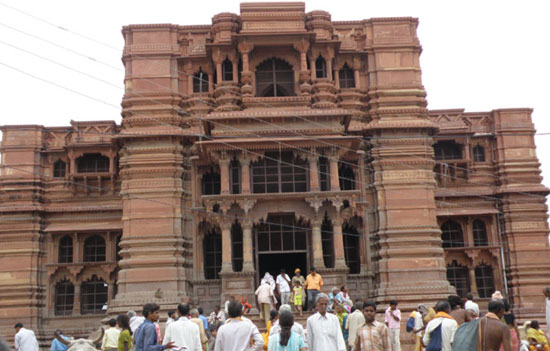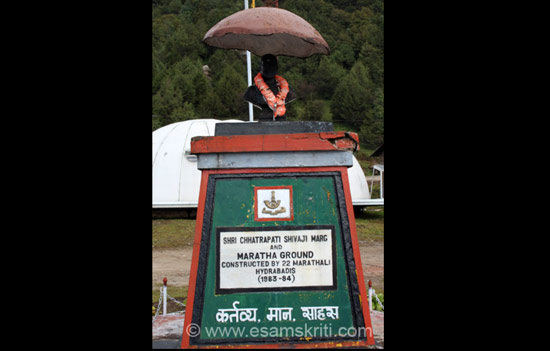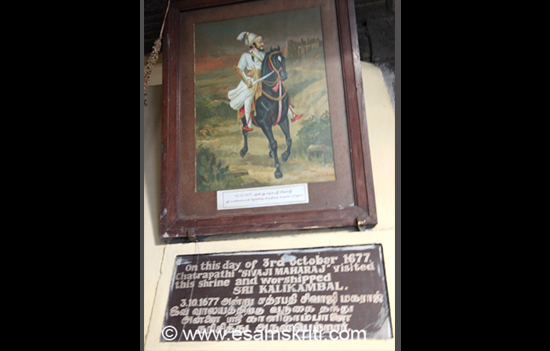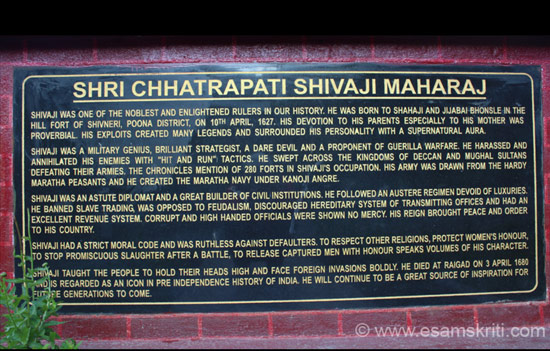- Know about history of name Aurangabad, Why it brings back bitter memories and city now named after Sambhaji. Will change create Hindu Muslim tension? Lastly, discrimination faced under Nizam Rule & role of Arya Samaj in liberation of Hyderabad state.
The
MVA government in Maharashtra and the Shinde-BJP government thereafter passed
resolutions changing the name of Aurangabad to Sambhajinagar. Since then some
learned said it will cause Hindu Muslim tensions while others think it should be
named after Swami Ramanandteerth who contributed to the liberation of
Marathwada from Nizam of Hyderabad’s rule or freedom-fighter Govind Shroff who also
contributed to Aurangabad’s development.
Without
undermining the contributions of Swamiji or Govindbhai this article presents a
different view. First a background on the city Aurangabad.
Current
city was founded in 1610 by Malik Ambar, the Siddi general of the Nizamshahi
dynasty of Ahmadnagar. It was first named Khadki, later Fatehpur and when
Aurangzeb set up his capital in 1653 he changed the name to Aurangabad. Aurangzeb died at Ahmadnagar in 1707 but his
tomb is situated at Khuldabad in Aurangabad district i.e. on the way to Ellora
Caves.
Author
Saurabh Lohogaonkar writes, “The original name of Aurangabad can be traced as Raj Tatak/Tadag (Royal Lake) from
epigraphical records of early India. Considering that Satvahana had Pratishthan
(Paithan-55km from Aurangabad) as their capital and Yadavas Devagiri (renamed
Daulatabad-20km) a Royal Lake nearby is certainly a possibility.” (The
Iconography of the Buddhist Sculptures of Ellora by R S Gupte Pg.17.)
Why is Aurangzeb
so disliked that people want the name of a city named after him changed? Here
are some reasons.
1. 1666-67 “Various anti-Hindu decrees were launched, like removal of Hindus from many lower administrative posts, banning Shitala
Mata worship, destruction of temples in Delhi, banning rituals associated
with the Hindus like Darshan, Rajtilak of Hindu kings etc.” 3
2. “1669 Aurangzeb issued orders to his provincial governors to demolish schools and temple of Hindus.
3. 1669 Aurangzeb pulled down Kashi Vishwanath Mandir.
4. 1670 Aurangzeb pulled down Keshab Rai temple at Mathura.
5. 1679 Aurangzeb re-imposed jizya on Hindus.
6. 1689 Shivaji son Sambaji, under orders of Aurangzeb, put to a painful and cruel death.” 1
7. Even the loyal State of Jaipur was not spared, 67 temples were razed to the ground at Amber. 1 Pg. 235
Aurangzeb
changed names of towns to erase their Hindu past for e.g. Raigad became
Islamgad, Mathura to Islamabad, Kashi to Muhammadabad. 3 Appendix 8.
The
last important Mughal king is remembered for his fanaticism, destruction of temples and the
painful execution of Sambhaji (son of Shivaji).
 Govind Temple Vrindavan originally 7 storey & built by Raja Mansingh in 1590. But destroyed by Aurangzeb.
Govind Temple Vrindavan originally 7 storey & built by Raja Mansingh in 1590. But destroyed by Aurangzeb.
What is the association between the Bhonsle’s and Sambhajinagar?
Author
Saurabh says, “The ancestral jagir (fief) of the Bhonsale family was Verul and
nearby villages. Ghrushneshwar (Jyotirlinga near Verul now famous for Ellora),
Shikhar Shingnapur Mahadev, and Tulja Bhavani are the kuldevata of the Bhonsale
family. Maloji Bhonsale, great-grandfather of Chhatrapati Sambhaji renovated
the Ghrushneshwar Jyotirlinga temple in 1599AD. (G.S. Sardesai, Marathi
Riayasat-141).”
 Shivaji statue, somewhere near Tawang in Arunachal Pradesh.
Shivaji statue, somewhere near Tawang in Arunachal Pradesh.
 Shivaji visited this temple in Chennai in 1677.
Shivaji visited this temple in Chennai in 1677.
So why is city named after Sambhaji Raje?
Sambhaji
Raje lived from 1657 to 1689. He became Chhatrapati in 1680 i.e. post Shivaji’s
death.
The
name Sambhajinagar is to undo the pain caused by his painful death by Aurangzeb.
It also symbolises the huge amount of respect that the people of India and
Maharashtra in particular have for the lineage of Chhatrapati. Such pain would
not be overcome if the city was named after Swami
Ramanand Teerth (who fought for the liberation from Nizam’s rule) or
the respected Govindbhai
Shroff.
Why should name change create Hindu Muslim tension?
Aurangzeb
and his ancestors starting with Babur were invaders who had come from outside
India. They were not Indians, so why should Indians be concerned about changing
the name of a city named after a foreigner?
 About Shivaji Maharaj in Tawang.
About Shivaji Maharaj in Tawang.
Arya Samaj and protests against during Nizam rule
Hyderabad
State was ruled by the Nizams (Asif Jahi Dynasty, 1724 to 1948). The Nizam ruled
over three linguistic areas that are part of modern day Telangana, Maharashtra (Marathwada)
and Karnataka.
The
Arya Samaj played a role in the liberation of Marathwada including Hyderabad
state.
Smt H Geeta, Associate Prof in B.J.R. Government Degree College, Hyderabad wrote in Role of Arya Samaj in the Liberation of
Hyderabad State, “During the reign of VII Nizam Mir Osman Ali Khan the last
ruler, political awakening and Public Opinion began among the people, this took
place mainly because of the activities of Arya Samaj. Several restrictions were
imposed on the activities of Arya Samaj like the holding Nagar Kirtans,
hoisting Om flags and so on. When Nizam Government offered education only in
Urdu Medium attempt were made to start ‘Raastriya’ School. Under the president
ship of Pandit Rao Koratkar in 1932 branches of Arya Samaj were established
throughout state and education spread through libraries and schools in
Marathwada. The students of Intermediate College Aurangabad, under the guidance
of G.M.Shroff started The Vande Mataram Movement in 1938 and Shroff resigned as
teacher and helped organise it.” 7
Sri
Ram Sharma wrote in A History of the Arya
Samaj, “The Arya Samaj launched a successful
Satyagraha against the Nizam of Hyderabad in 1939 and delivered such a
shattering blow to his prestige that he was never able to recover his former
status, atleast in the eyes of his subjects.” Pg. 203
Also,
a quote from the DAV College Solapur site, “Dayanand Anglo
Vedic (DAV) College Trust and Management Society, New Delhi established Damani
Bhairuratan Fatehchand Dayanand College of Arts and Science, Solapur on 17th
June 1940 in memory of the victory of Satyagraha launched by Arya Samaj against
the Nizam of Hyderabad as a part of `Marathwada Mukti Sangram’.”
Not much is known about the discrimination against Hindus during
Nizam rule.
Dr
Satish K Kapoor, Local Secretary of Dayananda institutions, Solapur (2008 to
2012) and former British Council Scholar says that Arya Samajis were not
allowed to perform havan in their homes. They countered repressive policies with courage and conviction, and brought about a Vedic resurgence through education and social reform.
Dr
Gautam Pingle, Dean of Studies & Head, Centre for Telangana Studies,
MCR-HRD Institute of Telangana wrote about the land tax in The Formation and History of Telangana: A Collection of Nine Critical
Essays, “The Hindu canonical land tax was fixed by Bhishma in his
instruction to Yudhishthira in the Mahabharata to take “a sixth part, upon fair
calculation, of the yield of the soil as his tribute.” (Ganguli 2003 Volume
VIII:156).This was the famous shadbaga
and applied over time. Even Akbar’s minister Abul Fazl attested to the
continuity of the one-sixth rate: “Throughout the whole extent of Hindustan
where at all times so many enlightened monarchs have reigned, one-sixth of the
produce was exacted.” (Abul Fazl Allami, 1891:55). The Mohammedan Kings,
however, following Islamic law made a distinction between believers and
non-believers. The Islamic canonical land tax as
per sharia was fixed at 50% for non-Muslims and 10% for Muslims. The
British reduced the levels of taxation on rational principles. High tax rates
in Muslim-ruled Telangana stunted the growth of its society and economy of the
region, as compared to British-ruled Andhra.”
This name change shall help the people of India overcome bitter
memories associated with discriminations faced during Aurangzeb and Nizam’s
rule.
References
1. History and Culture of the Indian
People Volume 7.
2.
Why
has government renamed Aurangabad
3.
Aurangzeb-Whitewashing Tyrant, Distorting Narrative. Pg. 300.
Also read
1.
Shivaji’s
Karmas matter not caste
2.
Afraisaib
Khan not the Marathas renamed Aligarh
3.
A
brief history of the Nizam of Hyderabad
4.
Arya Samaj
Movement in the erstwhile Hyderabad State 1938-39
5.
Arya
Samaj and DAV Movement – Social and Educational Dimensions
6.
Border Movement in Hyderabad Karnataka for Liberation and Integration (1947-48).
To download PDF click on PDF.
7.
Role of Arya Samaj in the liberation of Hyderabad State. To download PDF click on PDF.
8.
Aurangzeb:
Whitewashing tyrant, distorting narrative
All
article pictures by www.esamskriti.com This
article must not be republished without the written permission of www.esamskriti.com